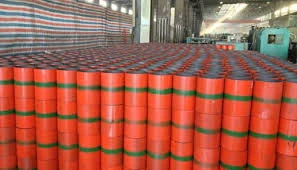- Afrikaans
- Albanian
- Amharic
- Arabic
- Armenian
- Azerbaijani
- Basque
- Belarusian
- Bengali
- Bosnian
- Bulgarian
- Catalan
- Cebuano
- Corsican
- Croatian
- Czech
- Danish
- Dutch
- English
- Esperanto
- Estonian
- Finnish
- French
- Frisian
- Galician
- Georgian
- German
- Greek
- Gujarati
- Haitian Creole
- hausa
- hawaiian
- Hebrew
- Hindi
- Miao
- Hungarian
- Icelandic
- igbo
- Indonesian
- irish
- Italian
- Japanese
- Javanese
- Kannada
- kazakh
- Khmer
- Rwandese
- Korean
- Kurdish
- Kyrgyz
- Lao
- Latin
- Latvian
- Lithuanian
- Luxembourgish
- Macedonian
- Malgashi
- Malay
- Malayalam
- Maltese
- Maori
- Marathi
- Mongolian
- Myanmar
- Nepali
- Norwegian
- Norwegian
- Occitan
- Pashto
- Persian
- Polish
- Portuguese
- Punjabi
- Romanian
- Russian
- Samoan
- Scottish Gaelic
- Serbian
- Sesotho
- Shona
- Sindhi
- Sinhala
- Slovak
- Slovenian
- Somali
- Spanish
- Sundanese
- Swahili
- Swedish
- Tagalog
- Tajik
- Tamil
- Tatar
- Telugu
- Thai
- Turkish
- Turkmen
- Ukrainian
- Urdu
- Uighur
- Uzbek
- Vietnamese
- Welsh
- Bantu
- Yiddish
- Yoruba
- Zulu
Casing Coupling Size Specifications and Fitment Guidelines for Optimal Performance
Understanding Casing Coupling Dimensions in the Oil and Gas Industry
Casing coupling dimensions are critical in the oil and gas industry, especially during the drilling and completion of oil and gas wells. Casing serves as a protective layer around the wellbore, ensuring the structural integrity of the well, preventing the influx of unwanted fluids, and maintaining isolation between different geological layers. Couplings, on the other hand, are used to connect lengths of casing together. Given the high pressures and variable temperatures encountered in subsurface environments, understanding casing coupling dimensions is essential for ensuring safety and efficiency in drilling operations.
Key Dimensions and Specifications
Casing dimensional specifications encompass various parameters such as diameter, weight, threading type, and length. One of the primary classifications of casing types is based on their outer diameters and wall thickness, which are often expressed in inches and pounds per foot. Common casing sizes include 5½, 7, 9⅝, and 13⅜, among others, with respective weights that can vary significantly. The weight of the casing is critical as it influences the structural support it provides against external pressures and loads during its installation and throughout its operational life.
The coupling dimensions themselves are equally important. Couplings are typically manufactured in a variety of dimensions to match the different casing sizes. They are produced to conform to standards set by the American Petroleum Institute (API), which stipulates the minimum requirements for performance and safety. API casing couplings commonly feature dimensions that facilitate easy connection but ensure a reliable seal. The typical dimensions include outer diameter and length, with threaded ends that allow for a secure fit with the casing sections.
Types of Threads
casing coupling dimensions

The connections made through casings and couplings are achieved using specific types of threads, which are vital for the effectiveness of the joint. API has established several threading standards, such as API Buttress and API Round threads, which are commonly used in casing applications. The dimensional specifications of threads include pitch, depth, and angle, all of which influence how well the casing can withstand the compressive and tensile forces experienced during drilling operations.
Importance of Accurate Measurements
Accuracy in casing coupling dimensions is paramount. Inaccurate dimensions can lead to improper fittings, which can result in leaks, compromised structural integrity, or even failures during high-pressure conditions. Moreover, as rig technology advances, casings and couplings must meet increasingly stringent industry standards. This pushes manufacturers to innovate and create couplings that conform to modern requirements while ensuring ease of use and reliability.
Conclusion
In conclusion, understanding casing coupling dimensions is essential for all stakeholders in the oil and gas industry. From drilling engineers to procurement specialists, awareness of these specifications ensures that the correct materials are utilized for safe and efficient operations. As the industry continues to evolve, maintaining stringent standards for casing and coupling dimensions will remain crucial in safeguarding well integrity and optimizing production. Investing in quality materials and adhering to recommended dimensions ultimately contributes to the profitability and sustainability of oil and gas operations worldwide.
-
Tubing Pup Joints: Essential Components for Oil and Gas OperationsNewsJul.10,2025
-
Pup Joints: Essential Components for Reliable Drilling OperationsNewsJul.10,2025
-
Pipe Couplings: Connecting Your World EfficientlyNewsJul.10,2025
-
Mastering Oilfield Operations with Quality Tubing and CasingNewsJul.10,2025
-
High-Quality Casing Couplings for Every NeedNewsJul.10,2025
-
Boost Your Drilling Efficiency with Premium Crossover Tools & Seating NipplesNewsJul.10,2025







